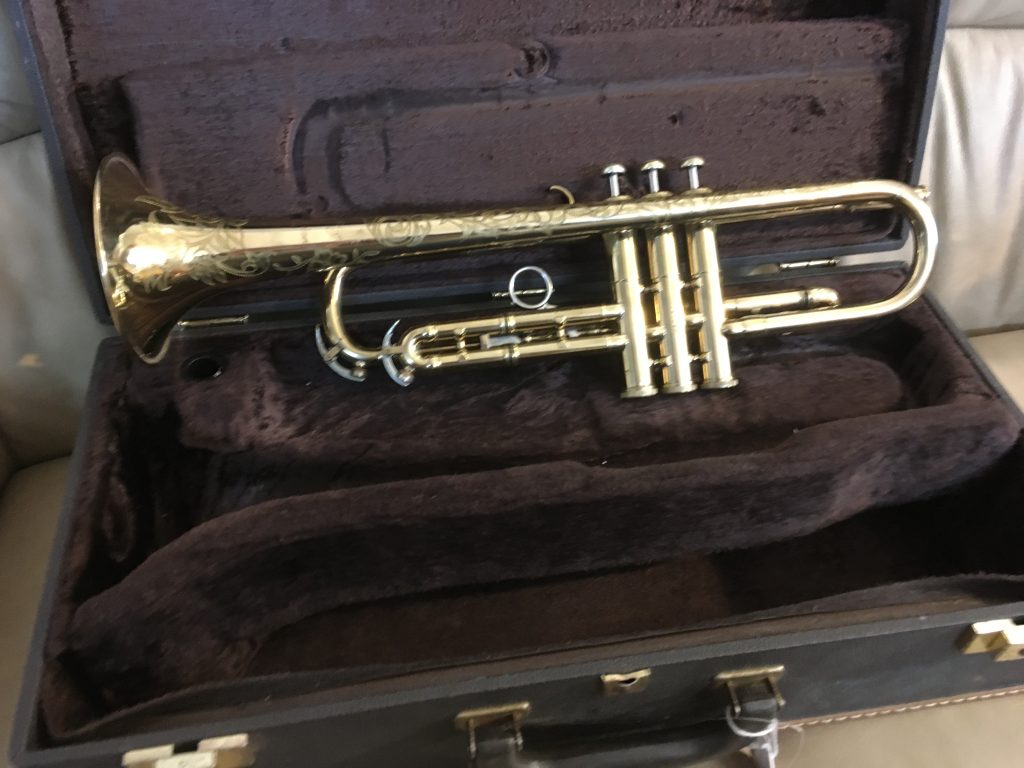

Trumpets were slower to adopt the new valve technology, so for 100 years or more, composers often wrote separate parts for trumpet and cornet. The cornet's valves allowed for melodic playing throughout the register of the cornet. It is a predecessor of the post horn from which the cornet evolved, and was used like a bugle to signal orders on the battlefield. The Roman/Etruscan cornu (or simply "horn") is the lingual ancestor of these. The 11th edition of the Encyclopædia Britannica referred to serpents as "old wooden cornets". While not musically related, instruments of the Zink family (which includes serpents) are named "cornetto" or "cornett" in modern English to distinguish them from the valved cornet described here.

The name cornet derives from corne, meaning horn, itself from Latin 'cornu'. The modern-day cornet is used in brass bands, concert bands, and in specific orchestral repertoire that requires a more mellow sound. As several instrument builders made improvements to both instruments, they started to look and sound more alike. Symphonic repertoire often involves separate parts for trumpet and cornet. Up until the early 20th century, the trumpet and cornet co-existed in musical ensembles. The first notable virtuoso player was Jean-Baptiste Arban, who studied the cornet extensively and published La grande méthode complète de cornet à piston et de saxhorn, commonly referred to as the Arban method, in 1864.

Later, and most importantly, François Périnet received a patent in 1838 for an improved valve which is the basis of all modern brass instrument piston valves. They jointly applied for a patent and were granted this for a period of ten years. These two instrument makers almost simultaneously invented valves, though it is likely that Blühmel (or Blümel) was the inventor, and Stölzel who developed a practical instrument. This instrument could not have been developed without the improvement of piston valves by Silesian horn player Friedrich Blühmel and Heinrich Stölzel in the early 19th century. Cornets first appeared as separate instrumental parts in 19th-century French compositions. However by the 1830s, Parisian makers were using piston valves.

VIDEO: Dr.The cornet derived from the posthorn, by applying rotary valves to it in the 1820s in France. Shires factory! I’m told he played “Carnival of Venice” with variations, and (obviously) didn’t miss a note! Overall, I think this was my best effot yet, and was excited to learn that Doc Severinsen himself tried it out while it was on loan to a friend at the S.E. Mark Metzler did the beautiful new lacquer (). Robb achieved this, so I tried “folding” the first slide forward to take a little more off the length as seen in the third set of photos. A goal was to shoot for a very short overall length less than 8.5 inches. The second group of shots show the donor horn, the early steps of reconstruction, and the bell being bent into main and branch sections by Robb Steward, then taped to the body. I left it as a trumpet, however, I machined an adapter to allow the use of preferred cornet mouthpiece. Had I used the trumpet bell, the engraving would have ended up alongside the second valve. The general design of the mouthpipe is similar to the Calicchio pocket, causing me to dub this project the “Calicchiolds.” While the original bell was good enough to use, I had a “new old stock” Recording cornet bell, which had the beautiful engraving closer to the rim. Originally on the third slide, I decided to move it to the mouthpipe, between the tuning slide and the third valve casing, so any valve combination could be lowered. One of the goals was to retain the characteristic spring-trigger slide. I started with a fairly banged-up 1960s example. I felt that I was able to create one of the more unique wraps of all my pocket conversions. This pocket trumpet conversion is now completed, and I’m very pleased with the results.


 0 kommentar(er)
0 kommentar(er)
